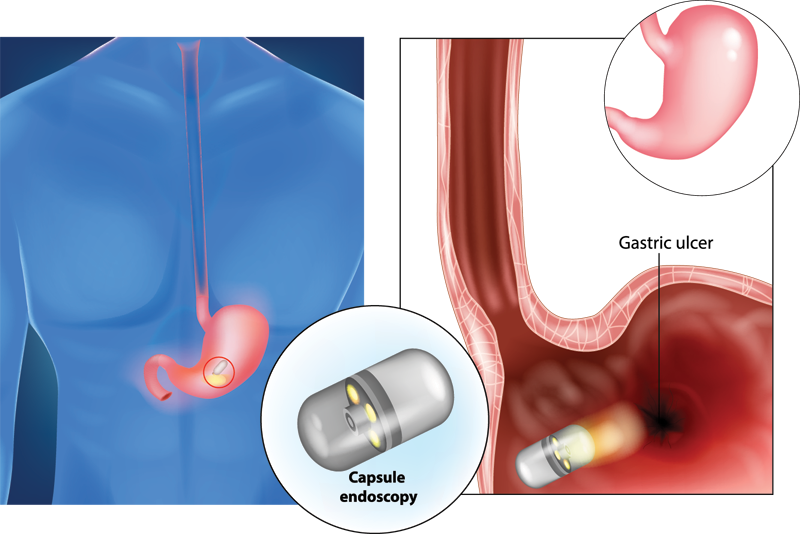A capsule endoscopy, also known as capsule enteroscopy, is a procedure that uses a pill-sized wireless camera to visually examine the inside lining of the three portions of the small intestine, which includes the duodenum, jejunum and ileum. The camera will take a series of photographs as it passes through the gastrointestinal tract. These photographs are sent wirelessly to a small recording device that is worn on the body. The photographs are then downloaded to a computer about 24 hours after the procedure. The capsule will then be passed through the digestive tract by the patient.
While portions of the intestine can be seen during a colonoscopy or upper endoscopy procedure, these procedures are unable to provide a complete view of the small intestine. The capsule endoscopy is able to provide a view of the small intestine and is helpful in detecting some of the following conditions:
- Intestinal bleeding
- Polyps
- Inflammatory bowel disease
- Tumor
- Celiac disease
While this procedure can provide a more accurate and detailed result than an X-ray, a capsule endoscopy is unable to perform therapy in the area of concern. A capsule endoscopy is a rapidly improving technology that is making conditions of the small intestine much easier to diagnose.


